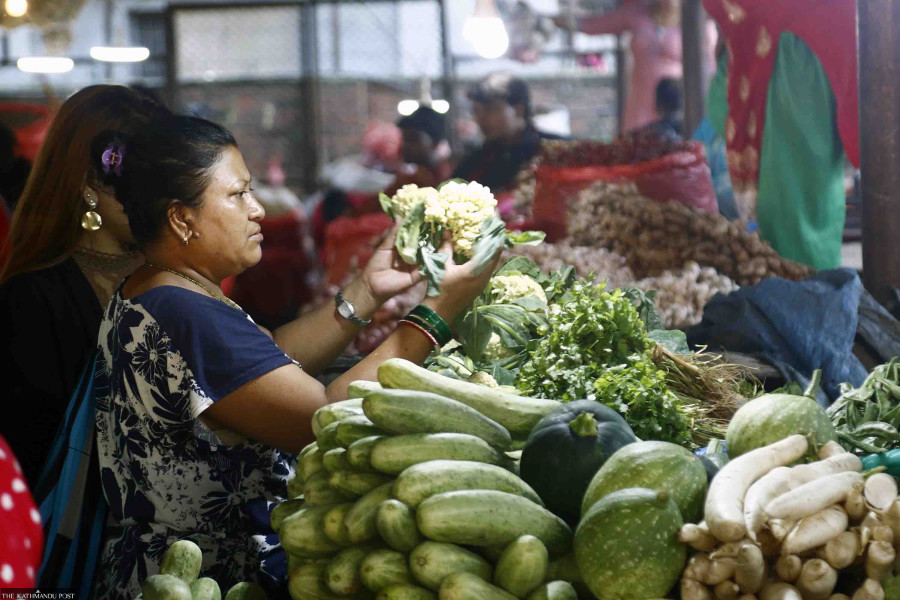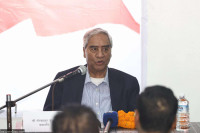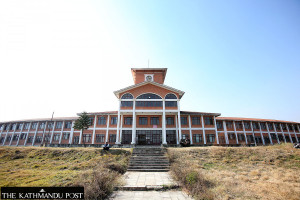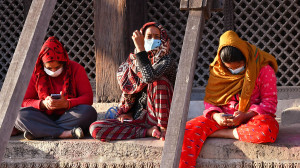Editorial
Numbers v reality
We need a more representative consumer price index to capture the real picture.
Consumer price inflation in Nepal has fallen to its lowest level in over four years. According to recent Nepal Rastra Bank data, it reached 2.77 percent in mid-May 2025. Food and beverage inflation is only 1.52 percent, while inflation for non-food items and services is 3.45 percent. Although low inflation appears to be good news for Nepali consumers, they don’t really feel the relief. In marketplaces and bazaars selling daily essentials, customers continue to haggle with sellers while complaining about high prices. It is still a daily struggle for many working-class Nepalis to afford basic necessities: the inflation claims by the central bank do not feel real.
Significant price increases have been recorded across many items. In the food and beverage category, ghee and oil prices rose by 11.08 percent, fruits by 6.15 percent, and pulses by 5.17 percent. Milk products and eggs saw a 2.78 percent rise, while cereal grains went up by 2.38 percent. On the non-food side, education costs increased by 5.88 percent, and miscellaneous goods and services jumped by 9.04 percent. While the prices of essentials keep rising, people’s incomes are not keeping up, making it hard for them to afford necessities. This gap between official inflation data and the actual cost of living casts doubt on the reliability of the central bank’s statistics.
Experts believe the decline in inflation is largely driven by a collapse in aggregate demand. With reduced demand, less money is circulating in the economy, slowing price growth. Globally, fuel prices have also fallen (although recent tensions between Israel and Iran have resulted in some increases). However, the price decrease might only apply to a few items and, in many instances, the reduction may not make a meaningful difference to people’s lives. Inflation is the rate at which prices rise, so consumers might not feel at ease even with low inflation as the prices are already high. In the absence of income growth, financial strain will continue to weigh heavy on low- and fixed-income households.
While inflation doesn’t fully reflect what’s happening in the market, as it mainly focuses on macroeconomics, the methodology employed in calculating inflation has also faced criticisms. The consumer price index, the metric used to track inflation, includes over 500 goods and services in the same basket, even goods an average working-class family might not consume. Therefore, even if the prices of these goods drop and pull down inflation, the situation of low-income families may not improve much.
There must thus be a more realistic calculation of inflation. Instead of analysing inflation year on year, we can compare the price from one month to the immediately preceding month within the same year. A proper market analysis is needed, helping policymakers create policies that match market realities. Further, many countries break down inflation into food, energy, and non-food categories to provide a clearer picture of price changes in each area. Perhaps we should consider a similar approach instead of measuring inflation by looking at the overall basket. To capture the experiences of low- and middle-class consumers, a separate, more representative index can be established.
Rising conflicts and health crises around the world may deliver a serious blow to our economy. The government needs to carefully study market dynamics and implement policies that focus on strengthening the sectors and groups most in need. Presenting an incomplete picture that creates a false sense of relief serves no one in the long run.




 8.12°C Kathmandu
8.12°C Kathmandu












%20(1).jpg&w=300&height=200)

